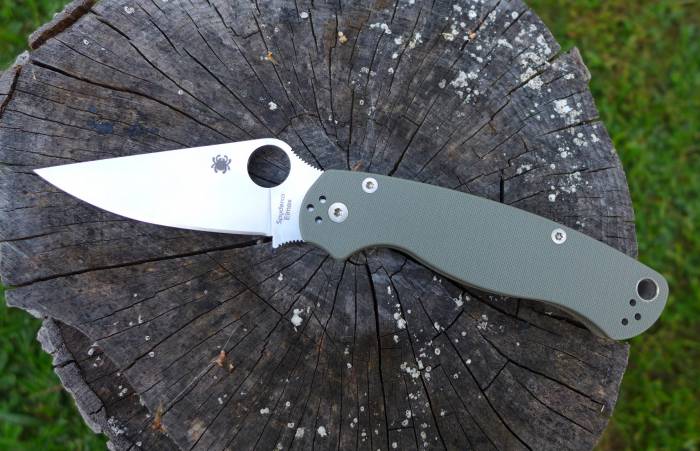In the bustling world of professional kitchens, where precision and efficiency are paramount, the humble folding knife emerges as an unsung hero. Yet, knowing how to open a folding knife safely is crucial to maintaining that precision and ensuring safety. As a kitchen professional, your tools are an extension of your skills, and handling them with care is essential.
Folding knives, with their compactness and versatility, have become an indispensable part of culinary arsenals. Whether you're a seasoned chef or a culinary enthusiast, understanding the nuances of these knives can significantly enhance your kitchen experience. Let's delve into the art and science of safely opening a folding knife.

Understanding Folding Knives
Folding knives, often known as pocket knives, are designed for convenience and portability. Unlike fixed-blade knives, they feature a pivot mechanism that allows the blade to fold into the handle. This design not only makes them compact but also adds a layer of safety by concealing the blade when not in use. To fully appreciate the utility of a folding knife, it's essential to understand its components and how they function together.
For those new to the world of folding knives, exploring the mechanics of folding knives can provide valuable insights into their operation. Each knife comprises a blade, a handle, and a locking mechanism, each playing a pivotal role in ensuring safe and efficient usage.
The Importance of the Locking Mechanism
The locking mechanism is a critical feature of folding knives, ensuring that the blade remains securely in place during use. Various locking mechanisms exist, each with its unique benefits. For a deeper understanding, comparing lockback vs liner lock mechanisms can help you choose the right knife for your needs.
When opening a folding knife, ensuring that the lock is engaged is crucial to prevent accidental closure. This action is especially important in a kitchen setting, where distractions and quick movements are common. Therefore, understanding how these mechanisms work can significantly enhance your safety and efficiency.
Step-by-Step Guide to Opening a Folding Knife Safely
1. Inspect the Knife
Before opening your folding knife, conduct a brief inspection. Ensure that the knife is clean and free from any debris that could impede its operation. A quick visual check can prevent unexpected issues when you need the knife the most.
2. Grip the Knife Securely
Hold the handle firmly but comfortably. Your grip should ensure control without exerting unnecessary force. A steady grip is essential for both opening the knife and using it effectively.
3. Use the Thumb Stud or Flipper
Most folding knives feature a thumb stud or flipper for easy opening. Using your thumb, apply gentle pressure to the stud, or flick the flipper to deploy the blade. The motion should be smooth and controlled to prevent accidental slips.
4. Engage the Locking Mechanism
Once the blade is fully extended, ensure the locking mechanism is engaged. This step is crucial to maintain the blade's position during use. Familiarity with different locking mechanisms can enhance your understanding of how to secure your knife effectively.
Common Mistakes to Avoid
Even seasoned professionals can make mistakes when handling folding knives. Here are some common pitfalls to avoid:
- Rushing the Process: Take your time to open and close the knife. Rushing can lead to slips and cuts.
- Ignoring the Lock: Always ensure the lock is engaged before using the knife.
- Improper Storage: Store your folding knife with the blade closed to prevent accidents.
For more tips on knife handling, visit this guide on choosing folding knives.
Maintenance Tips for Folding Knives
Proper maintenance of your folding knife is key to its longevity and performance. Regular cleaning and lubrication can keep the blade sharp and the pivot mechanism smooth. Additionally, check the locking mechanism periodically to ensure it operates as intended.
Cleaning
Clean your knife after each use, especially if it has been exposed to corrosive substances. Use mild soap and warm water, ensuring the knife is thoroughly dried before storage.
Lubrication
Apply a small amount of lubricant to the pivot area and the locking mechanism. This practice reduces friction and enhances the smoothness of the knife's operation.

FAQs
1. What types of folding knives are best for kitchen use?
Folding knives with a strong locking mechanism and a sturdy handle are ideal for kitchen use. They offer reliability and safety during intense culinary tasks. For more options, explore different types of knives.
2. How often should I clean my folding knife?
Regular cleaning is essential, especially after cutting acidic or corrosive materials. Ideally, clean your knife after each use to maintain its condition.
3. Can I use a folding knife for all kitchen tasks?
While folding knives are versatile, they are best suited for tasks that require precision and control. For heavy-duty tasks, a fixed-blade knife may be more appropriate. Learn more about fixed blade vs folding knives.
By understanding how to open a folding knife safely, you enhance not only your safety but also your efficiency in the kitchen. With the right techniques and maintenance, your folding knife can become a reliable companion in your culinary journey.
This article contains affiliate links. We may earn a commission at no extra cost to you.


























